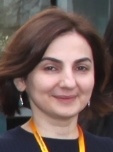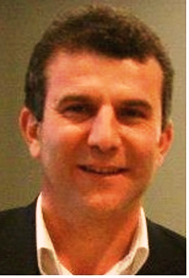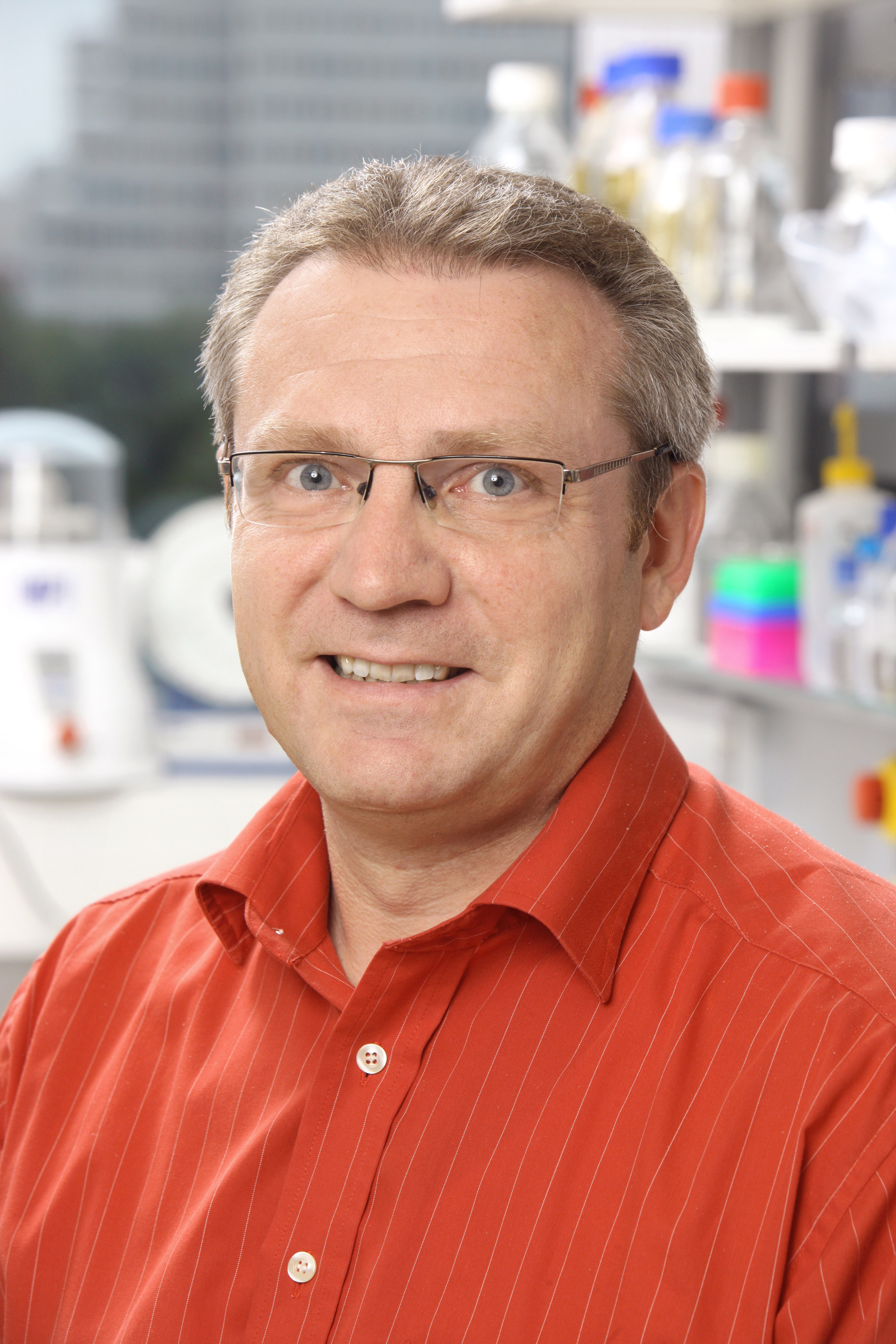Sessions/Tracks
Immunity and Therapies-2025 serves as a premier global platform for discussing the latest advancements in innate immune disorders, autoimmune diseases, cancer therapies, and immunotherapy. This esteemed conference aims to unite academic scientists, industry leaders, innovators, and research scholars to share their insights, clinical experiences, and cutting-edge research across all stages of immunological discovery from foundational studies to translational and therapeutic applications.
The event offers an exceptional opportunity to engage in meaningful dialogue, foster collaborations, and explore breakthrough solutions in the field of immunology. Topics will span a wide spectrum, including disease mechanisms, novel drug development, immune regulation, and personalized therapeutic strategies.
Organized by Conference Series Ltd, this event is part of a renowned global initiative comprising 1000+ international events, including 300+ conferences, 500+ symposiums and workshops across the USA, Europe, and Asia, supported by over 1000 scientific societies. The organization also publishes 700+ open-access journals, featuring contributions from 30,000+ distinguished scientists and editorial board members, ensuring a broad and impactful scientific reach.
Track 1: Innate Immunity
The innate immune system, also known as the nonspecific immune system, is a crucial component of the body's overall defense mechanism. It consists of specialized cells and molecular processes that provide the first line of defense against invading pathogens. Unlike the adaptive immune system, which is exclusive to vertebrates and offers long-term, pathogen-specific protection, the innate immune system provides immediate, generalized defense and does not confer lasting immunity.
The innate immune response relies on a broad family of pattern recognition receptors (PRRs) that detect conserved molecular structures found on pathogens, known as pathogen-associated molecular patterns (PAMPs). These mechanisms are evolutionarily conserved and are present across all classes of living organisms, including both plants and animals.
The system includes components of both humoral immunity (such as antimicrobial peptides, complement proteins, and cytokines) and cell-mediated immunity (including macrophages, neutrophils, natural killer cells, and dendritic cells), working together to rapidly identify and neutralize infectious threats.
Track 2: Immune Response
The immune system plays a vital role in defending the body against potentially harmful substances by identifying and responding to antigens foreign or abnormal molecules typically found on the surface of cells, viruses, fungi, or bacteria. In addition to living pathogens, non-living substances such as toxins, chemicals, drugs, or even foreign particles like splinters can also act as antigens. Once detected, the immune system launches a targeted response to eliminate or neutralize these threats.
Every cell in the body carries surface proteins that function as self-antigens, including a specialized group known as HLA (human leukocyte antigen) antigens. Over time, the immune system learns to recognize these as "self" and typically avoids attacking them, maintaining a delicate balance between defence and tolerance.
Immunity particularly innate immunity is the natural defence system you're born with. It serves as the body's first line of defence, forming physical and chemical barriers (such as skin, mucous membranes, and secretions) that prevent harmful substances from entering and causing harm. This immediate, non-specific response acts as a crucial frontline safeguard while the more specialized adaptive immune system prepares a longer-term defence.
Track 3: Innate immune evasion
Cells of the innate immune system play a crucial role in preventing the unchecked growth of bacteria within the body. However, many pathogens have evolved sophisticated mechanisms to evade or subvert these defences, allowing them to persist and cause disease.
Common evasion strategies include intracellular replication, as seen in Mycobacterium tuberculosis, which hides within host cells to avoid detection. Some bacteria, such as Salmonella, produce a protective capsule that shields them from complement-mediated lysis and phagocytosis.
Certain normally mutualistic bacteria, like species of Bacteroides a major component of the mammalian gut microbiota can act as opportunistic pathogens under specific conditions. For example, Bacteroides fragilis can cause peritoneal infections and evades immune detection by inhibiting phagocytosis, either by interfering with phagocytic receptor signalling or by mimicking host cell surfaces, thereby avoiding recognition as foreign.
Staphylococcus aureus employs yet another tactic by inhibiting the phagocyte’s response to chemokine signals, reducing its ability to reach and eliminate pathogens. Other organisms, including M. tuberculosis, Streptococcus pyogenes, and Bacillus anthracis, have evolved mechanisms to directly destroy phagocytes, further disabling the innate immune response.
Track 4: Other species Immunity
Bacteria and potentially other prokaryotes have evolved a specialized defence mechanism known as the restriction-modification (R-M) system to protect themselves from invading pathogens such as bacteriophages. In this system, bacteria produce restriction endonucleases, enzymes that recognize and cleave specific sequences within the viral DNA of invading phages. To prevent self-destruction, the host bacterium methylate’s its own DNA, marking it as "self" and thereby shielding it from enzymatic attack. The restriction-modification system and restriction endonucleases are unique to prokaryotic organisms and represent a fundamental strategy in microbial immunity.
Unlike vertebrates, invertebrates lack lymphocytes and an antibody-based humoral immune system, indicating that the complex adaptive immune system likely emerged with the first vertebrates. However, invertebrates do possess primitive immune mechanisms that serve as evolutionary precursors to adaptive immunity. One key feature is the use of pattern recognition receptors (PRRs) proteins that detect conserved molecular patterns associated with pathogens.
Among these, Toll-like receptors (TLRs) are a well-studied class of PRRs, found across all coelomates (animals with a true body cavity), including humans. These receptors play a critical role in recognizing microbial components and activating immune responses.
Another evolutionarily conserved immune mechanism is the complement system a biochemical cascade that helps eliminate pathogens. While the full complement system is characteristic of vertebrates, many invertebrates, including insects, crustaceans, and worms, utilize a simplified, analogous response known as the prophenoloxidase (proPO) system, which contributes to pathogen neutralization through melanization and other defence mechanisms.
Track 5: Species Immunity
Bacteria, and possibly other prokaryotic organisms, employ a unique defense mechanism known as the restriction-modification (R-M) system to protect themselves from viral pathogens such as bacteriophages. In this system, bacteria produce specialized enzymes called restriction endonucleases that recognize and cleave specific sequences within the viral DNA, thereby neutralizing the invading threat. To avoid self-damage, the bacterial host marks its own DNA through methylation, which designates it as "self" and prevents cleavage by its own endonucleases. Notably, both restriction endonucleases and the R-M system are exclusive to prokaryotes, representing a fundamental microbial immune strategy.
In contrast, invertebrates lack lymphocytes and an antibody-mediated humoral immune system, suggesting that a complex, multicomponent adaptive immune system likely evolved with the emergence of vertebrates. Despite this, invertebrates possess innate immune mechanisms that appear to be evolutionary precursors to aspects of vertebrate immunity.
One such mechanism involves pattern recognition receptors (PRRs) proteins found in nearly all organisms that detect pathogen-associated molecular patterns (PAMPs). A major class of PRRs is the Toll-like receptors (TLRs), which are present in all coelomates (animals with a body cavity), including humans, and play a central role in initiating immune responses upon pathogen detection.
Additionally, many forms of life, including invertebrates, possess a complement-like system. While vertebrates rely on a fully developed complement cascade to clear pathogens, some invertebrates such as insects, crabs, and worms employ a modified version called the prophenoloxidase (proPO) system. This system participates in immune defense through processes like melanization, which encapsulates and neutralizes pathogens.
Track 6: Immune System Disorders
Immune system disorders arise when the immune system becomes either overactive or underactive, disrupting the body's natural defense balance. In cases of over activity, the immune system mistakenly targets and damages the body’s own tissues, leading to autoimmune diseases. Conversely, immune deficiency disorders impair the immune system’s ability to respond effectively to infections, resulting in increased susceptibility to illness.
Autoimmune diseases occur when, in response to an unknown trigger, the immune system begins producing autoantibodies that attack healthy cells and tissues instead of foreign pathogens. Common examples include rheumatoid arthritis, lupus, and type 1 diabetes.
Treatment strategies for autoimmune conditions typically focus on suppressing or modulating immune system activity to reduce inflammation and prevent further tissue damage, thereby improving the patient’s quality of life and managing disease progression.
Track 7: Cell Mediated Immunity
Cell-mediated immunity is a type of immune response that does not involve antibodies, but instead relies on the activation of phagocytes, antigen-specific cytotoxic T lymphocytes (CTLs), and the release of cytokines in response to the presence of antigens. This arm of the immune system plays a crucial role in defending the body against intracellular pathogens, such as viruses, some bacteria, and cancerous cells.
Traditionally, the immune system has been divided into two main branches:
-
Humoral immunity, in which protective responses are mediated by antibodies present in the body's fluids (historically referred to as “humors”).
-
Cellular (cell-mediated) immunity, in which immune cells, rather than antibodies, are responsible for protection.
Helper T cells (CD4+ T cells) play a central role in cell-mediated immunity by coordinating immune responses and enhancing the activity of other immune cells through cytokine signaling. In contrast, cytotoxic T cells (CD8+ T cells) directly kill infected or abnormal cells, often through the induction of apoptosis (programmed cell death). While cytokines are commonly associated with helper T cell responses, cytotoxic T cells can execute their function without always relying on cytokines, highlighting that cytokine involvement is not universal in cell-mediated immunity.
Track 8: Neural regulation
The central nervous system (CNS) plays a critical role in regulating innate immune responses through both hormonal and neuronal pathways. The neuroendocrine stress response, along with the sympathetic and parasympathetic branches of the autonomic nervous system, generally acts to suppress innate immune activity at both systemic and regional levels. In contrast, the peripheral nervous system often functions to enhance local immune responses, particularly at sites of infection or injury.
These systems interact dynamically to ensure a balanced immune response. Initially, they work in concert to activate and amplify local inflammatory reactions, helping to contain or eliminate invading pathogens. Once the threat is resolved, these same pathways contribute to terminating inflammation and restoring homeostasis within the host.
Emerging evidence suggests that the CNS is not merely a passive observer but an active participant in the regulation of acute-phase immune responses. Given its influence on immune activation, suppression, and resolution, the CNS can be regarded as an integral component of the body’s response to infection, functioning in close coordination with the innate immune system.
Track 9: Inflammation
Inflammation is a fundamental biological response triggered by harmful stimuli such as pathogens, damaged cells, or irradiation. It represents a protective mechanism aimed at eliminating the source of injury and initiating tissue repair. The classic signs of acute inflammation include pain (dolor), heat (calor), redness (rubor), swelling (tumor), and loss of function.
As a key component of innate immunity, inflammation is a nonspecific response that acts rapidly to control threats, in contrast to adaptive immunity, which provides a pathogen-specific, delayed response. To prevent immunopathology damage caused by excessive immune activation the inflammatory process is tightly regulated by various endogenous molecules that control the magnitude and duration of the response.
An inadequate inflammatory response can result in uncontrolled tissue damage and failure to eliminate harmful agents, potentially threatening the organism’s survival. On the other hand, chronic or dysregulated inflammation can contribute to the development of numerous diseases, including hay fever, periodontitis, atherosclerosis, rheumatoid arthritis, and even certain cancers, as studied in cancer immunology.
Thus, precise regulation of inflammation is essential to balance host defense with the preservation of tissue integrity and overall health.
Track 10: Innate Cancer immunology
Cancer immunology is a dynamic and rapidly advancing branch of immunology that explores the complex interactions between the immune system and cancer cells (also referred to as tumors or malignancies). This field is at the forefront of biomedical research, with the primary goal of developing innovative immunotherapeutic strategies to prevent, treat, and slow the progression of cancer.
A central focus in cancer immunology is the immune system’s ability to recognize and respond to cancer-specific antigens. This understanding has fuelled the development of targeted therapies, including cancer vaccines, monoclonal antibodies, immune checkpoint inhibitors, and T-cell-based treatments, many of which have already transformed cancer care and continue to evolve through next-generation technologies.
In addition to therapeutic advances, the identification of tumor-associated antigens and immune biomarkers is leading to more precise diagnostic tools and personalized treatment approaches. A key discovery in this area was published by Ohtani in 2007, demonstrating the prognostic value of tumor-infiltrating lymphocytes (TILs) in human colorectal cancer. The presence of lymphocytic infiltration, particularly those triggering inflammatory responses, was associated with improved patient survival, suggesting that an endogenous anti-tumor immune response plays a meaningful role in disease outcomes.
By 2025, cancer immunology continues to push boundaries leveraging advancements in genomics, artificial intelligence, and cellular engineering to refine immunotherapies, overcome tumor immune evasion, and ultimately improve survival rates across a wide range of malignancies. The integration of cancer immunology into precision medicine frameworks marks a transformative era in oncology, offering renewed hope for effective, long-term cancer control.
Track 11: Acquired Immunity
The adaptive immune system also known as the acquired or specific immune system—is a highly specialized subsystem of the overall immune defence that is responsible for recognizing, targeting, and eliminating specific pathogens. It is one of the two primary immune strategies found in vertebrates, complementing the innate immune system.
Unlike the innate response, which is immediate and non-specific, the adaptive immune system develops over time and generates a targeted response against a specific pathogen. A hallmark of adaptive immunity is the formation of immunological memory following an initial exposure, allowing for a faster and stronger response upon subsequent encounters. This principle forms the foundation of vaccination, enabling long-term protection against infectious diseases.
The adaptive immune response comprises two major components:
-
Humoral immunity, which involves B cells and the production of antibodies that neutralize pathogens and mark them for destruction.
-
Cell-mediated immunity, which relies on T cells (including helper and cytotoxic T cells) to eliminate infected or abnormal cells.
Together, these components of the adaptive immune system offer precise and long-lasting protection, playing a vital role in pathogen clearance, immune regulation, and long-term immune surveillance.
Track 12: Anatomical barriers
Anatomical barriers form the first line of defense in the immune system and consist of physical, chemical, and biological components that collectively prevent the entry and colonization of pathogens.
The epithelial surfaces such as skin and mucosal linings serve as physical barriers that are largely impermeable to most infectious agents. Desquamation (shedding) of the skin epithelium further contributes to defense by removing microbes that adhere to the surface. The epidermis, being avascular and relatively dry, along with the activity of sebaceous glands in the dermis, creates an environment that is hostile to microbial survival.
In the gastrointestinal and respiratory tracts, peristaltic movement and cilia action, respectively, help expel pathogens. Additionally, mucus secretions act as a physical and chemical trap for infectious agents, aiding in their removal.
The gut microbiota plays a critical biological barrier role by competing with pathogenic organisms for nutrients and attachment sites, and by producing antimicrobial substances that inhibit the growth of harmful microbes.
Other protective mechanisms include the flushing action of tears and saliva, which help prevent infection of the eyes and oral cavity by continuously clearing microbes and delivering antimicrobial enzymes like lysozyme.
Together, these anatomical barriers provide immediate and essential protection, reducing the likelihood of infection and allowing the immune system time to mount further responses if needed.
Track 13: Immunity Vitamins
Vitamins play a crucial role in supporting the immune system and protecting the body against a wide range of illnesses by preventing cellular damage. While a balanced diet rich in vitamins is generally preferred, vitamin supplements can be a practical alternative especially when certain nutrient-rich foods are unavailable or dietary intake is insufficient.
Among all vitamins, some provide stronger immune-enhancing benefits than others:
-
Vitamin C is well known for its immune-boosting and antioxidant properties. It supports wound healing, neutralizes free radicals, and helps protect the body from oxidative stress, which can lead to chronic inflammation, heart disease, and cancer. Additionally, vitamin C helps the body defend against toxic chemicals and environmental pollutants.
-
Vitamin D plays a vital role in enhancing immune function and modulating inflammation. It is naturally synthesized in the skin upon exposure to sunlight, and for many people, moderate sun exposure is sufficient to meet their vitamin D needs. However, supplementation may be necessary for those with limited sun exposure or absorption issues.
-
Antioxidants are considered among the best nutrients for immune defense. The primary antioxidant vitamins include:
These antioxidants help neutralize free radicals, thus maintaining immune cell health and enhancing the body’s ability to fight off infections. They are abundantly found in colorful fruits and vegetables, particularly those with purple, blue, red, orange, and yellow hues. To preserve their nutritional value, these foods should ideally be consumed raw or lightly steamed.
Incorporating a vitamin-rich, antioxidant-loaded diet is a natural and effective way to strengthen the immune system and promote long-term health.
Track 14: Immune Therapy
Immunotherapy is treatment that uses certain parts of a person’s immune system to fight diseases such as cancer. This can be done in a couple of ways:
Stimulating your own immune system to work harder or smarter to attack cancer cells. Giving you immune system components, such as man-made immune system proteins. Some types of immunotherapy are also sometimes called biologic therapy or biotherapy.
In the last few decades immunotherapy has become an important part of treating some types of cancer. Newer types of immune treatments are now being studied, and they’ll impact how we treat cancer in the future.
Immunotherapy includes treatments that work in different ways. Some boost the body’s immune system in a very general way. Others help train the immune system to attack cancer cells specifically.
Immunotherapy works better for some types of cancer than for others. It’s used by itself for some of these cancers, but for others it seems to work better when used with other types of treatment.
Track 15: Therapeutic applications
The innate immune system plays a critical role both systemically and locally in the development and regulation of infectious and inflammatory diseases. A deeper understanding of its underlying mechanisms has been pivotal in the development of vaccines, vaccine adjuvants, and anti-inflammatory therapeutics.
Key components of innate immunity, such as pattern-recognition receptors (PRRs) including Toll-like receptors (TLRs), retinoic acid-inducible gene I (RIG-I)-like helicases, and nucleotide-binding oligomerization domain (NOD)-like receptors have emerged as promising therapeutic targets, given their central role in the pathogenesis of numerous diseases.
Additionally, proteolytic systems such as autophagy and immunoproteasomes are essential for innate immune function and present further potential for drug development. Leveraging these innate mechanisms, researchers have made significant progress in creating innovative preventive and therapeutic strategies.
Our recent studies have contributed to this evolving field by developing novel vaccines and adjuvants based on mechanistic insights into innate immune signaling. We have also investigated the interactions between the innate immune system and the endocrine system, revealing new perspectives on how innate immunity influences metabolic and endocrine disorders.
This review highlights the potential of innate immune molecules as immunomodulatory agents and explores their future applications in treating a wide range of inflammatory and metabolic diseases, marking a significant advancement in translational immunology.
Track 16: Plant Innate Immunity
Innate immunity is the first line of defence against invading microorganisms in vertebrates and the only line of defence in invertebrates and plants. Plants are invaded by an array of pathogens of which only a few succeed in causing disease. The attack by others is countered by a sophisticated immune system possessed by the plants. The plant immune system is broadly divided into two. microbial-associated molecular-patterns-triggered immunity (MTI) and effector-triggered immunity (ETI). MTI confers basal resistance, while ETI confers durable resistance, often resulting in hypersensitive response. Plants also possess systemic acquired resistance (SAR), which provides long-term defence against a broad-spectrum of pathogens. Salicylic-acid-mediated systemic acquired immunity provokes the defense response throughout the plant system during pathogen infection at a particular site. Trans-generational immune priming allows the plant to heritably shield their progeny towards pathogens previously encountered. Plants circumvent the viral infection through RNA interference phenomena by utilizing small RNAs.
Track 17: Case Studies
In the case study, we describe the effects of a particular individual's concentration/meditation technique on autonomic nervous system activity and the innate immune response. The study participant may be a women or a men or an animal with regard to tolerating extreme cold and hot weather conditions that influence the autonomic nervous system and thereby the innate immune response.
Track 18: Invitro measurements
Studies that are in vitro (Latin: in glass; often not italicized in English are performed with cells or biological molecules studied outside their normal biological context; for example proteins are examined in solution, or cells in artificial culture medium. Colloquially called "test tube experiments", these studies in biology and its sub-disciplines are traditionally done in test-tubes, flasks, petri dishes etc. They now involve the full range of techniques used in molecular biology such as the so-called omics. Studies that are conducted using components of an organism that have been isolated from their usual biological surroundings permit a more detailed or more convenient analysis than can be done with whole organisms. In contrast, in vivo studies are those conducted in animals including humans, and whole plants.
Examples of in vitro studies include: the isolation, growth and identification of microorganisms; cells derived from multicellular organisms (cell culture or tissue culture); subcellular components (e.g. mitochondria or ribosomes); cellular or subcellular extracts (e.g. wheat germ or reticulocyte extracts); purified molecules (often proteins, DNA, or RNA, either individually or in combination); and the commercial production of antibiotics and other pharmaceutical products. Viruses, which only replicate in living cells, are studied in the laboratory in cell or tissue culture, and many animal virologists refer to such work as being in vitro to distinguish it from in vivo work on whole animals.








